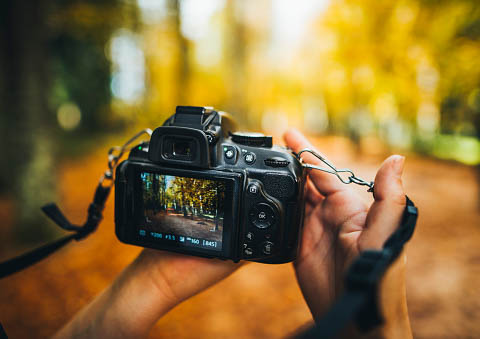How to Take Photos: A Beginner’s Guide


Photography is an art form that allows us to capture moments, emotions, and scenes in a single frame. Whether you’re using a high-end DSLR camera or just your smartphone, photography is accessible to everyone. However, getting started can be overwhelming for beginners. This guide aims to provide step-by-step instructions on how to take photos, covering essential concepts, techniques, and tips to help you capture stunning images.
Understanding Your Camera
The first step in photography is to familiarize yourself with your camera. Whether you have a point-and-shoot, mirrorless, or DSLR camera, read the user manual thoroughly. Learn about the basic functionalities such as adjusting settings, zooming, and focusing. Understanding your camera’s capabilities will empower you to make the most of them.
Composition is the foundation of a visually appealing photograph. It’s about arranging elements within the frame to create balance and harmony and draw the viewer’s attention. Familiarize yourself with the rule of thirds, leading lines, framing, and negative space. Experiment with different compositions to enhance your storytelling through images.
Utilizing Natural Light
Light is a crucial element in photography. As a beginner, focus on utilizing natural light before diving into artificial lighting. Early morning and late afternoon light provide soft, warm tones, often referred to as the golden hour. Avoid shooting during midday, when the sun is high and causes harsh shadows. Overcast days can also provide beautiful, soft lighting for portraits and landscapes.
Understanding focus and depth of field will help you control what is sharp and what is blurred in your photos. In portrait photography, use a wide aperture (a small f-stop number like f/2.8 or f/1.8) to create a shallow depth of field, blurring the background and making your subject stand out. For landscapes, a narrower aperture (a higher f-stop number like f/11 or f/16) will ensure more of the scene is in focus.
Capturing Motion
Learning to capture motion effectively can add dynamism to your photographs. To freeze fast-moving subjects, use a fast shutter speed (1/500 sec or faster). Conversely, to create a sense of motion, slow down your shutter speed (1/30 sec or slower) and pan the camera along with the moving subject.
Achieving the right exposure is vital for well-lit images. The exposure is a balance between three elements: aperture, shutter speed, and ISO. The aperture controls the amount of light entering the lens, the shutter speed determines how long the sensor is exposed to light, and the ISO measures the camera’s sensitivity to light. Balancing these settings will help you capture well-exposed images in various lighting conditions.
White balance is essential for maintaining accurate colors in your photos. Different lighting conditions can cast color tints, such as warm tones in tungsten lighting or cool tones in shady areas. Adjust the white balance setting in your camera to match the lighting conditions, or use RAW format to fine-tune it during post-processing.
If your camera allows it, shoot in RAW format. Unlike JPEG, RAW files preserve all the data captured by the sensor, giving you more flexibility during post-processing. You can adjust exposure, white balance, and other settings without compromising image quality.
Patience and Perseverance
Photography is an art that requires patience and perseverance. Don’t get discouraged by initial challenges or unsatisfactory results. Keep practicing, experimenting, and learning from your mistakes. Over time, you will improve your skills and develop a unique photographic style.
Post-processing is an essential part of digital photography. While it can’t fix a poorly composed or exposed image, it can enhance well-captured shots. Software like Adobe Lightroom or Photoshop allows you to adjust colors, contrast, and sharpness, giving your images a polished look.
Photography offers a vast array of genres to explore. Try your hand at portraits, landscapes, street photography, macro photography, and more. Experimenting with different genres will help you discover your preferences and strengths.
Learn from others
Follow photographers whose work inspires you. Study their techniques, compositions, and approaches to photography. Attend workshops, join photography groups, and engage with other photographers to learn from their experiences and gain valuable insights.
Photography is a journey of self-expression, creativity, and storytelling. As a beginner, it’s essential to understand the basics, experiment, and be patient with yourself. Remember that photography is subjective, and there are no strict rules to follow. Use this guide as a starting point, but don’t be afraid to break the rules and develop your style. So, grab your camera and start capturing the world one frame at a time!
